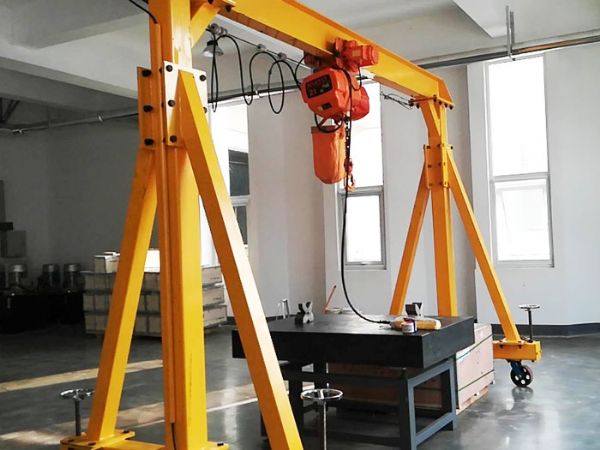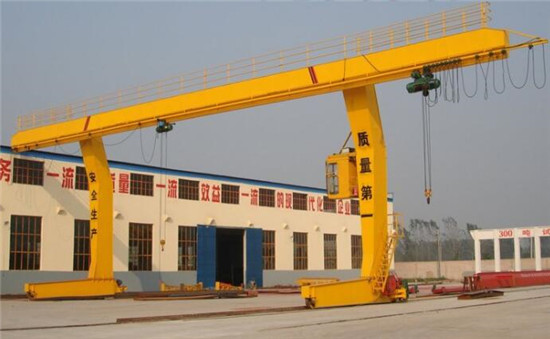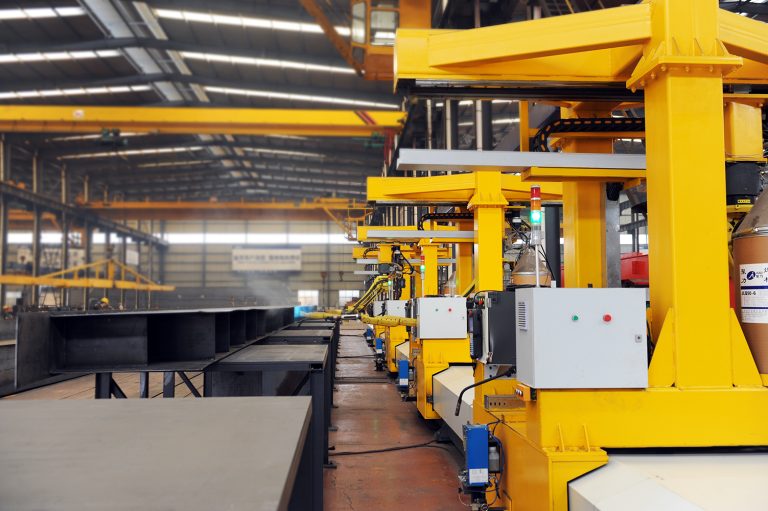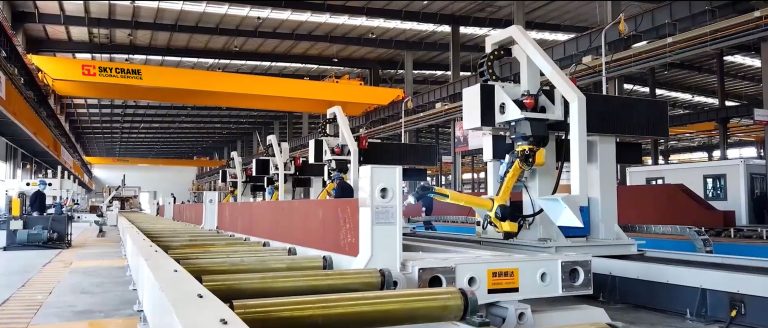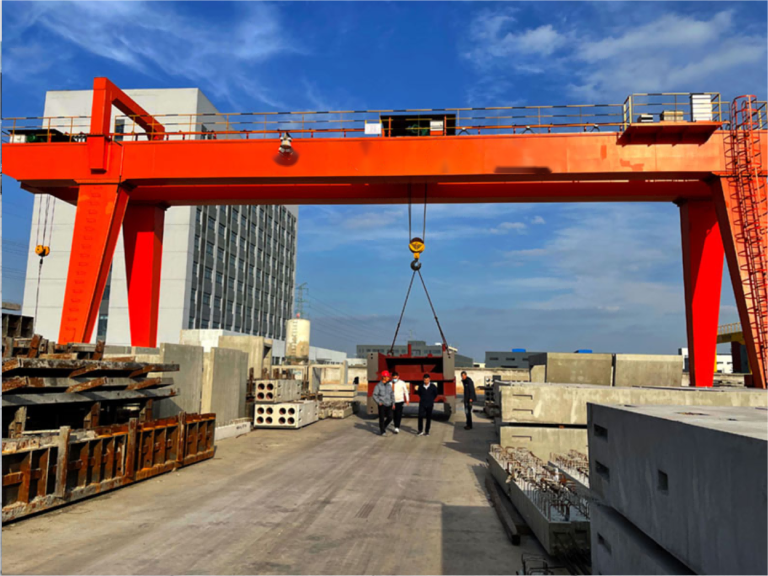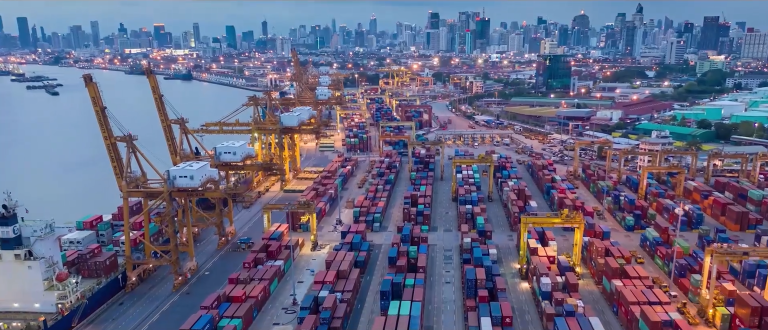Table of Contents
Benefits of Using Metallurgical Bridge Crane in Industrial Applications
Metallurgical bridge cranes are essential equipment in industrial applications, providing a reliable and efficient means of moving heavy loads within a facility. These cranes are specifically designed to withstand the harsh conditions of metallurgical environments, making them ideal for use in steel mills, foundries, and other metalworking facilities. One of the key benefits of using a metallurgical bridge crane is its ability to handle extremely heavy loads with precision and ease.
The design of a metallurgical bridge crane includes features such as heat-resistant materials, specialized hoisting mechanisms, and advanced control systems that allow for precise positioning of loads. This makes them well-suited for lifting and moving molten metal, hot ingots, and other heavy materials in metallurgical processes. The ability to handle such heavy loads with precision is crucial in ensuring the safety of workers and the efficiency of operations in a metallurgical facility.
In addition to their ability to handle heavy loads, metallurgical bridge cranes offer a number of other benefits that make them a valuable asset in industrial applications. One of the key advantages of using a metallurgical bridge crane is its versatility. These cranes can be customized to meet the specific needs of a facility, with options for different lifting capacities, spans, and operating speeds. This flexibility allows for efficient material handling in a wide range of applications, from loading and unloading materials to moving equipment and machinery within a facility.
Another benefit of using a metallurgical bridge crane is its efficiency. These cranes are designed to maximize productivity by reducing downtime and streamlining material handling processes. The advanced control systems of metallurgical bridge cranes allow for precise and efficient movement of loads, minimizing the risk of accidents and improving overall operational efficiency. This can result in cost savings for a facility by reducing labor costs and increasing throughput.
Metallurgical bridge cranes are also known for their durability and reliability. These cranes are built to withstand the harsh conditions of metallurgical environments, including high temperatures, heavy loads, and corrosive materials. The use of heat-resistant materials and specialized coatings ensures that metallurgical bridge cranes can withstand the rigors of daily operation in a metallurgical facility. This durability and reliability make metallurgical bridge cranes a long-lasting investment that can provide years of reliable service.
In addition to metallurgical bridge cranes, rail-mounted container gantry cranes are another essential piece of equipment in industrial applications. These cranes are used for loading and unloading containers from ships, trucks, and trains, making them a vital link in the global supply chain. Rail-mounted container gantry cranes offer a number of benefits, including increased efficiency, reduced labor costs, and improved safety.
One of the key benefits of using a rail-mounted container gantry crane is its ability to handle containers of various sizes and weights with ease. These cranes are designed to lift and move containers quickly and efficiently, allowing for rapid loading and unloading of ships and trains. The advanced control systems of rail-mounted container gantry cranes enable precise positioning of containers, reducing the risk of accidents and improving overall operational efficiency.
Rail-mounted container gantry cranes are also known for their versatility and flexibility. These cranes can be customized to meet the specific needs of a facility, with options for different lifting capacities, spans, and operating speeds. This flexibility allows for efficient container handling in a wide range of applications, from loading and unloading ships to moving containers within a port facility. The ability to handle containers of various sizes and weights with precision makes rail-mounted container gantry cranes a valuable asset in industrial applications.
In conclusion, metallurgical bridge cranes and rail-mounted container gantry cranes are essential equipment in industrial applications, providing a reliable and efficient means of moving heavy loads within a facility. The benefits of using these cranes include increased efficiency, reduced labor costs, improved safety, and enhanced productivity. By investing in metallurgical bridge cranes and rail-mounted container gantry cranes, facilities can streamline material handling processes, improve operational efficiency, and ensure the safety of workers.
Key Features and Advantages of Rail-Mounted Container Gantry Crane
Metallurgical Bridge Crane, Rail-Mounted Container Gantry Crane
Rail-mounted container gantry cranes are essential equipment in the shipping and logistics industry. These cranes are designed to efficiently move containers from ships to storage yards or vice versa. They are mounted on rails, allowing them to move along a fixed path to reach containers at different locations within a port or terminal. In this article, we will discuss the key features and advantages of rail-mounted container gantry cranes.
One of the main advantages of rail-mounted container gantry cranes is their ability to handle heavy loads with precision and efficiency. These cranes are equipped with powerful hoisting mechanisms that can lift containers weighing several tons. The gantry structure provides stability and support for the crane, allowing it to move containers smoothly and safely.
Rail-mounted container gantry cranes are also known for their versatility. They can be customized to meet the specific needs of a port or terminal. For example, the crane’s lifting capacity, span, and height can be adjusted to accommodate different types of containers and cargo. This flexibility makes rail-mounted container gantry cranes suitable for a wide range of applications, from small ports to large container terminals.
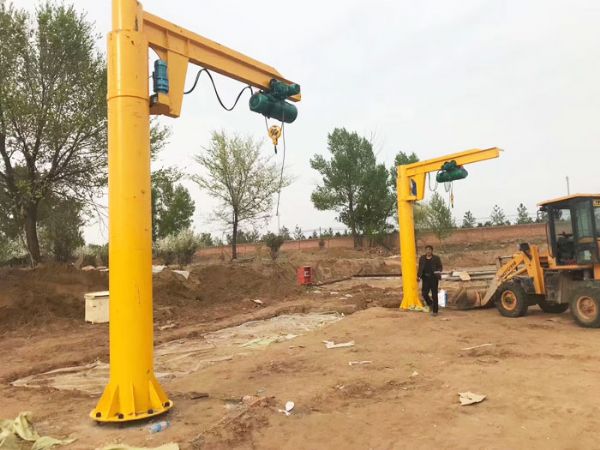
Another key feature of rail-mounted container gantry cranes is their efficiency in handling containers. These cranes are designed to maximize productivity and minimize downtime. They can move containers quickly and accurately, reducing the time it takes to load or unload a ship. This efficiency helps ports and terminals to meet tight schedules and improve their overall operational performance.
Rail-mounted container gantry cranes are also equipped with advanced safety features to protect workers and cargo. These cranes are designed to withstand harsh environmental conditions, such as strong winds and heavy rain. They are also equipped with sensors and alarms to alert operators of any potential hazards. This focus on safety helps to prevent accidents and ensure the smooth operation of the crane.
In addition to their key features, rail-mounted container gantry cranes offer several advantages over other types of cranes. One of the main advantages is their ability to handle containers of different sizes and weights. These cranes can lift standard containers as well as oversized or overweight containers, making them suitable for a variety of cargo handling tasks.
Rail-mounted container gantry cranes are also cost-effective in the long run. While they may require a significant initial investment, these cranes are designed to be durable and reliable. They have a long service life and require minimal maintenance, reducing operating costs over time. This makes rail-mounted container gantry cranes a smart investment for ports and terminals looking to improve their efficiency and productivity.
| No. | Product Name |
| 1 | LX electric suspension crane |
| 2 | MH rack crane |
| 3 | European-style crane |
| 4 | Harbour crane |
In conclusion, rail-mounted container gantry cranes are essential equipment for ports and terminals that handle large volumes of containers. These cranes offer key features such as heavy lifting capacity, versatility, efficiency, and safety. They also provide several advantages, including the ability to handle different types of containers and cost-effectiveness. Overall, rail-mounted container gantry cranes are a valuable asset for any port or terminal looking to streamline their cargo handling operations.
Comparison of Metallurgical Bridge Crane and Rail-Mounted Container Gantry Crane in Material Handling Operations
Metallurgical bridge cranes and rail-mounted container gantry cranes are two types of heavy-duty cranes commonly used in material handling operations. While both serve the purpose of lifting and moving heavy loads, there are key differences between the two that make each suitable for specific applications.
Metallurgical bridge cranes are designed for use in metallurgical plants, foundries, and other industrial settings where high temperatures and harsh environments are common. These cranes are equipped with special features such as heat shields, cooling systems, and protective coatings to withstand extreme conditions. The main advantage of metallurgical bridge cranes is their ability to operate in environments where standard cranes would not be able to function effectively.
On the other hand, rail-mounted container gantry cranes are commonly used in ports and container terminals for loading and unloading shipping containers from trucks and ships. These cranes are mounted on rails and can move along the length of the dock to reach containers on different ships or trucks. Rail-mounted container gantry cranes are known for their efficiency and speed in handling large volumes of containers in a short amount of time.
One of the key differences between metallurgical bridge cranes and rail-mounted container gantry cranes is their mobility. Metallurgical bridge cranes are typically stationary and are installed in a fixed location within a facility. In contrast, rail-mounted container gantry cranes are mobile and can move along the rails to reach different areas of a port or terminal. This mobility allows rail-mounted container gantry cranes to handle a larger number of containers and increase productivity in a busy port environment.
Another difference between the two types of cranes is their lifting capacity. Metallurgical bridge cranes are designed to lift heavy loads in industrial settings, with lifting capacities ranging from a few tons to several hundred tons. Rail-mounted container gantry cranes, on the other hand, are specifically designed for handling shipping containers, with lifting capacities typically ranging from 30 to 70 tons. The higher lifting capacity of metallurgical bridge cranes makes them suitable for heavy-duty lifting applications, while rail-mounted container gantry cranes are optimized for handling containers efficiently.
In terms of operation, metallurgical bridge cranes are usually operated by a cab operator who controls the crane from a control room or cabin located on the crane itself. Rail-mounted container gantry cranes, on the other hand, are often operated remotely using a computerized control system. This allows operators to monitor and control the crane from a safe distance, improving safety and efficiency in container handling operations.
In conclusion, both metallurgical bridge cranes and rail-mounted container gantry cranes play important roles in material handling operations, each with its own set of advantages and applications. Metallurgical bridge cranes are ideal for heavy-duty lifting in harsh environments, while rail-mounted container gantry cranes excel in handling shipping containers in ports and terminals. Understanding the differences between these two types of cranes can help businesses choose the right equipment for their specific material handling needs.

